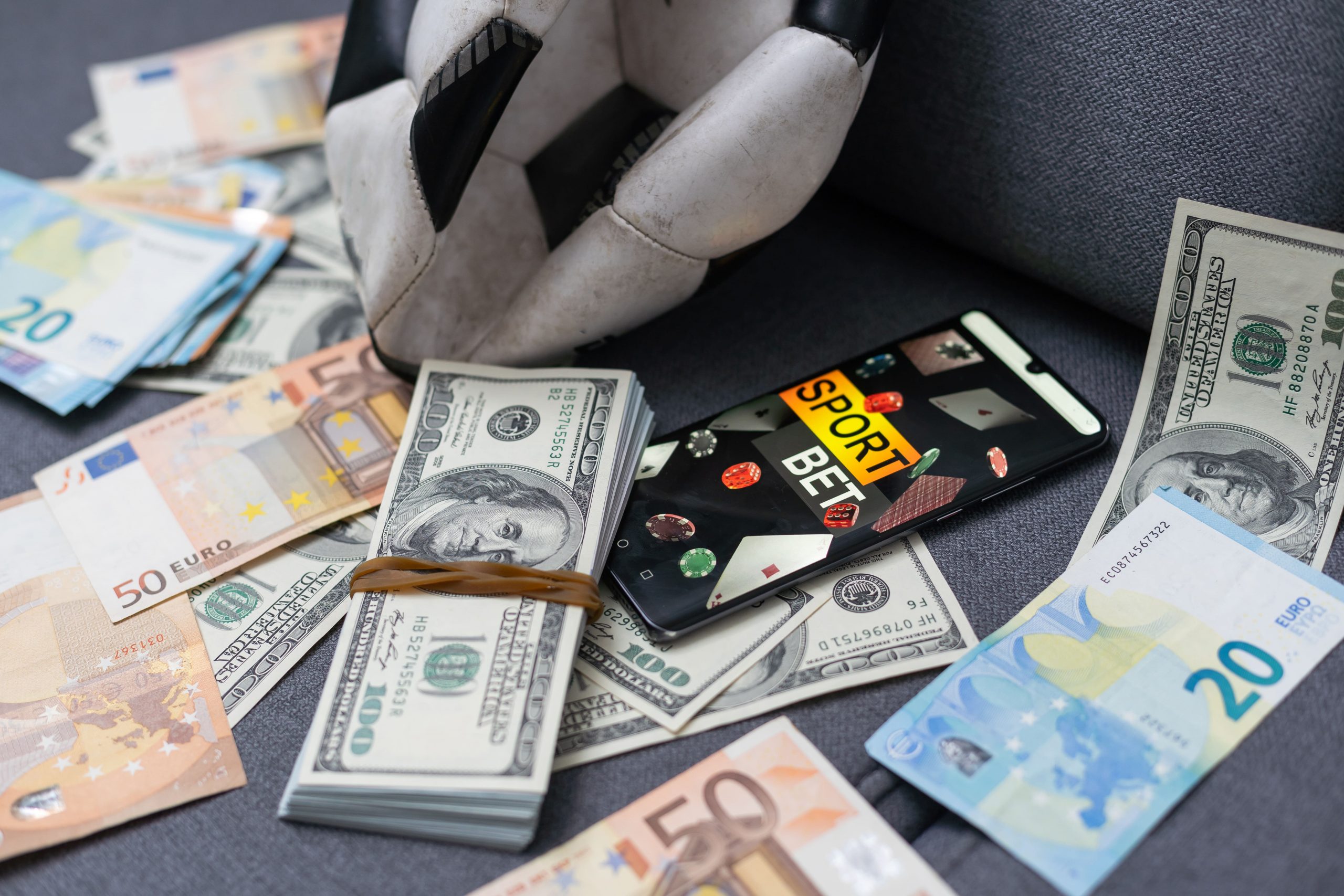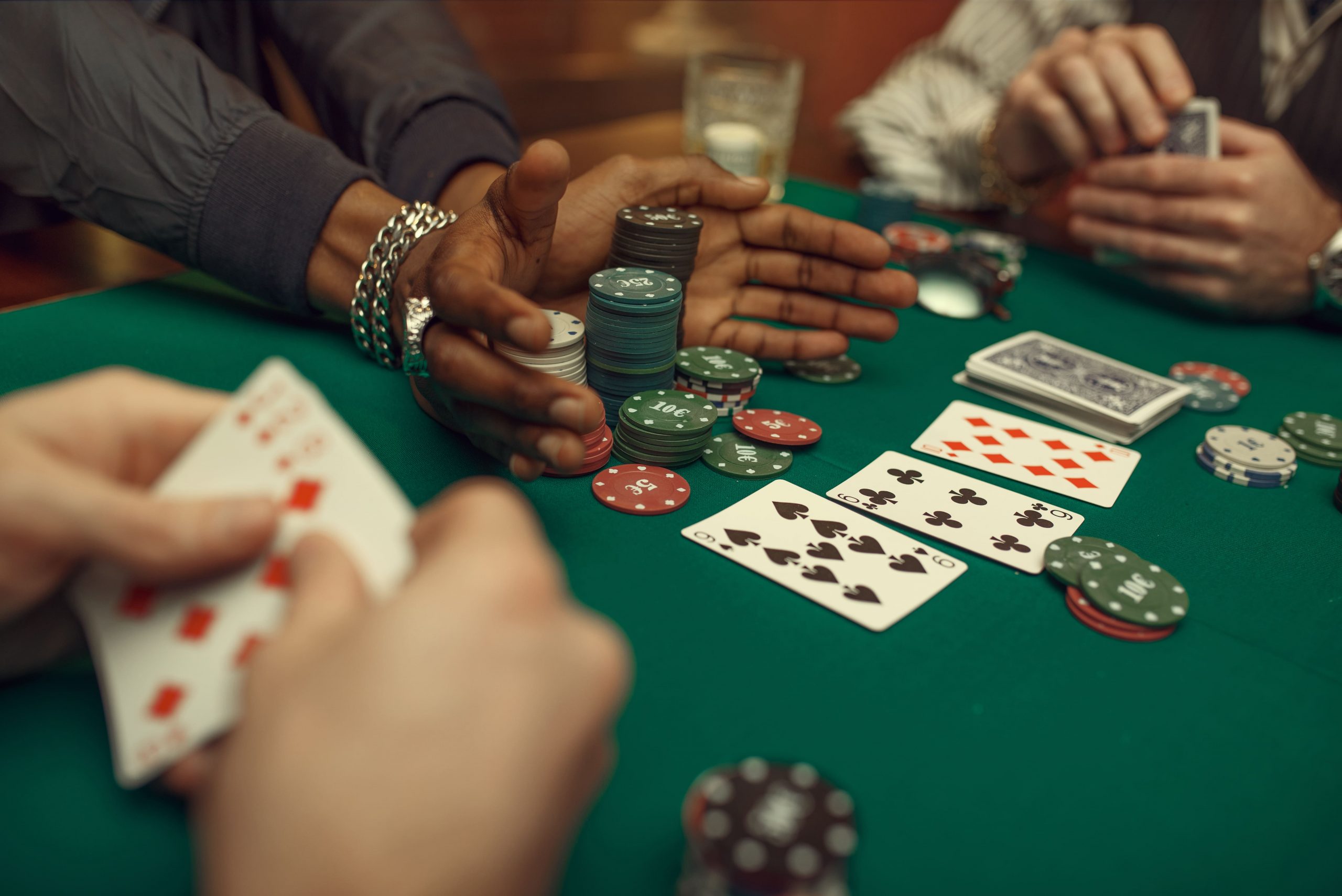You stare at your screen, confused by the jumble of numbers, plus and minus signs, and decimals.
You know there’s potential profit hidden in those sports betting odds, but calculating what you might win feels like solving a complex math equation. The frustration of not understanding odds formats isn’t just annoying—it’s potentially costing you money and preventing you from making truly informed bets.
Here’s the good news: mastering sports betting odds isn’t as complicated as it seems. With the right knowledge, you can quickly decipher any odds format, calculate potential payouts with confidence, and make smarter betting decisions. This comprehensive guide breaks down everything you need to know about sports betting odds—from basic formats to advanced calculations—giving you the tools to approach every bet with clarity and purpose.
Understanding the Different Odds Formats
Odds are the fundamental language of sports betting. They serve two critical functions: indicating the implied probability of an outcome and telling you exactly how much you stand to win. Let’s explore the three main odds formats you’ll encounter.
American Odds (Moneyline)
American odds, also called moneyline odds, are the standard format in the United States. They’re displayed with either a plus (+) or minus (-) sign preceding a number.
Negative American Odds (-)
Negative odds indicate the favorite in a matchup. The number shows how much you need to bet to win $100.
If you see odds of -150, it means you need to bet $150 to win $100 in profit (plus your original $150 stake back). Your total return would be $250.
Let’s say you’re betting on a championship basketball game, and the top-seeded team has odds of -200. This means you’d need to wager $200 to win $100 in profit. If your bet succeeds, you receive $300 back—your $200 stake plus $100 in winnings.
The calculation formula is:
- Profit = (Stake ÷ |American Odds|) × 100
- Where |American Odds| means the absolute value of the odds number
For a $50 bet at -150 odds:
- Profit = (50 ÷ 150) × 100 = 0.333 × 100 = $33.33
Positive American Odds (+)
Positive odds indicate the underdog in a matchup. The number shows how much profit you’ll win on a $100 bet.
If you see odds of +250, it means a $100 bet would win you $250 in profit (plus your original $100 stake back). Your total return would be $350.
If you’re betting on an underdog team with +300 odds, and you wager $50, you’d win $150 in profit if successful ($50 × (300 ÷ 100) = $150). Your total return would be $200—your $50 stake plus $150 in winnings.
The calculation formula is:
- Profit = (Stake × American Odds) ÷ 100
For a $75 bet at +200 odds:
- Profit = (75 × 200) ÷ 100 = 15,000 ÷ 100 = $150
Decimal Odds
Decimal odds are the simplest format and are widely used internationally, especially in Europe, Australia, and Canada. They appear as a single decimal number, like 1.75 or 3.50.
The decimal number represents your total return (including your stake) for each unit you bet. This makes calculations remarkably straightforward.
If you bet $100 at decimal odds of a 2.50, your potential return is:
- Return = Stake × Decimal Odds = $100 × 2.50 = $250
This $250 return includes both your original $100 stake and $150 in profit.
Let’s say you’re betting on a soccer match with odds of 1.85. If you place a $40 bet, your calculation would be:
- Return = $40 × 1.85 = $74
Your profit would be $74 – $40 = $34.
For underdogs with a low probability of winning, decimal odds can get quite high. A major underdog might have odds of 11.00 or higher, meaning a $10 bet would return $110 (a $100 profit).
Converting from American to decimal odds:
- For positive American odds: Decimal = (American ÷ 100) + 1
- For negative American odds: Decimal = (100 ÷ |American|) + 1
Fractional Odds
Fractional odds are traditional in the UK and Ireland, particularly for horse racing. They’re written as fractions, such as 5/1 (read as “five to one”) or 6/4 (read as “six to four”).
The first number represents how much you win relative to the second number, which is your stake. So with odds of 5/1, you win 5 units for every 1 unit staked. With 6/4 odds, you win 6 units for every 4 units staked.
For a $100 bet at 5/1 odds:
- Profit = (5 ÷ 1) × $100 = $500
- Total return = $500 profit + $100 stake = $600
For a $60 bet at 6/4 odds:
- Profit = (6 ÷ 4) × $60 = 1.5 × $60 = $90
- Total return = $90 profit + $60 stake = $150
You’ll occasionally see fractional odds written with different denominators, like 7/2 or 9/4. The calculation remains the same:
- For 7/2 odds: Profit = (7 ÷ 2) × Stake
- For 9/4 odds: Profit = (9 ÷ 4) × Stake
Converting from fractional to decimal odds is simple:
- Decimal = (Numerator ÷ Denominator) + 1
So 5/1 in decimal would be (5 ÷ 1) + 1 = 6.00
Understanding Implied Probability
Beyond telling you how much you might win, odds reveal the bookmaker’s assessment of an outcome’s probability. Understanding implied probability is crucial for identifying value bets—situations where you believe the actual probability of an outcome is higher than what the odds suggest.
Calculating Implied Probability
For American odds:
- Negative odds: Implied Probability = |American Odds| ÷ (|American Odds| + 100)
- Positive odds: Implied Probability = 100 ÷ (American Odds + 100)
For decimal odds:
- Implied Probability = 1 ÷ Decimal Odds
For fractional odds:
- Implied Probability = Denominator ÷ (Numerator + Denominator)
Let’s work through examples:
For American odds of -150:
- Implied Probability = 150 ÷ (150 + 100) = 150 ÷ 250 = 0.60 or 60%
For American odds of +250:
- Implied Probability = 100 ÷ (250 + 100) = 100 ÷ 350 = 0.286 or 28.6%
For decimal odds of 2.50:
- Implied Probability = 1 ÷ 2.50 = 0.40 or 40%
For fractional odds of 5/1:
- Implied Probability = 1 ÷ (5 + 1) = 1 ÷ 6 = 0.167 or 16.7%
These calculations reveal the bookmaker’s assessment of each outcome’s likelihood, adjusted to include their margin (also called the vig or juice).
Understanding the Vig (Bookmaker’s Margin)
Bookmakers don’t offer true odds—they build in a profit margin called the vig (short for vigorish), juice, or overround. This is how they guarantee profit regardless of the outcome.
For a fair market with two equally likely outcomes, the odds should be +100 (2.00 in decimal) for both sides, representing a 50% probability for each. However, you’ll typically see something like -110 on both sides. Let’s calculate the implied probabilities:
For -110 odds:
- Implied Probability = 110 ÷ (110 + 100) = 110 ÷ 210 = 0.524 or 52.4%
With both outcomes at 52.4%, the total implied probability is 104.8%, which exceeds 100%. This extra 4.8% is the bookmaker’s built-in edge.
To calculate the vig in a two-way market:
- Vig = (Implied Probability A + Implied Probability B – 1) × 100%
For -110 odds on both sides:
- Vig = (0.524 + 0.524 – 1) × 100% = 0.048 × 100% = 4.8%
This means that, on average, the bookmaker keeps 4.8% of the money wagered.
Advanced Payout Calculations
Parlays (Accumulators)
Parlays combine multiple bets into one, requiring all selections to win for a payout. The potential returns can be enormous, but so is the risk.
To calculate parlay payouts, you multiply the decimal odds of each selection:
For a $50 parlay with three selections at odds of 1.80, 2.20, and 1.65:
- Combined Odds = 1.80 × 2.20 × 1.65 = 6.534
- Total Return = $50 × 6.534 = $326.70
- Profit = $326.70 – $50 = $276.70
This same principle applies regardless of the odds format. For American odds, you’d first convert to decimal, then perform the calculation.
Teasers
Teasers are modified parlays where you adjust the point spread in your favor but accept lower odds. Common in basketball and football betting, they typically allow you to move the spread by 6, 6.5, or 7 points.
If you’re betting on two teams at -7.5 points each, a 6-point teaser would adjust both to -1.5 points. The odds for a standard two-team, 6-point teaser are typically -110, meaning you’d bet $110 to win $100.
The more teams you add to a teaser, the better the odds become, but the risk increases significantly.
If Bets and Reverse Bets
“If bets” link two or more straight bets, where the second bet only activates if the first bet wins. For example, if you place a $200 If Bet on Team A (-110) and Team B (+120), the process would be:
- You place $200 on Team A
- If Team A wins, your winnings plus initial stake ($381.82) automatically go to Team B
- If Team B also wins, you’d win $458.18 (381.82 × 1.20)
- Total profit: $458.18 – $200 = $258.18
A Reverse Bet is essentially two If Bets in opposite directions, ensuring your second selection still gets action even if your first selection loses.
Odds Movement and Line Shopping
Odds aren’t static—they change based on betting patterns, new information, and market adjustments. Understanding line movement helps you identify potential value.
If odds move from -150 to -200, the market is shifting toward favoring that outcome more strongly. Conversely, movement from -150 to -120 suggests decreased confidence.
Line shopping—comparing odds across multiple bookmakers—is one of the easiest ways to increase your long-term profitability. Even small differences add up significantly over time.
If one site offers a team at -150 and another at -140, betting $100 at the better odds would give you an extra $2.38 in profit ($71.43 vs. $69.05). Over hundreds of bets, this practice can be the difference between profit and loss.
Value Betting Strategy
The essence of profitable sports betting is finding value—situations where the actual probability of an outcome exceeds the implied probability from the odds.
Let’s say you’ve analyzed a football match and believe Team A has a 60% chance of winning. The bookmaker offers odds of +120 (decimal 2.20), which implies a 45.5% probability.
- Your estimated probability: 60%
- Implied probability from odds: 45.5%
- Difference: 14.5% in your favor
The expected value of a $100 bet would be:
- (0.60 × $120) – (0.40 × $100) = $72 – $40 = $32
This positive expected value of $32 means that, on average, you’d profit $32 for every $100 wagered on similar situations.
To calculate the ideal stake size using the Kelly Criterion:
- Kelly % = (bp – q) ÷ b
- Where:
- b = decimal odds – 1
- p = your estimated probability
- q = 1 – p
For our example:
- b = 2.20 – 1 = 1.20
- p = 0.60
- q = 0.40
- Kelly % = (1.20 × 0.60 – 0.40) ÷ 1.20 = (0.72 – 0.40) ÷ 1.20 = 0.32 ÷ 1.20 = 0.267 or 26.7%
Using a full Kelly, you’d bet 26.7% of your bankroll on this opportunity. However, most professional bettors use a fractional Kelly (often 1/4 or 1/2) to reduce volatility.
Common Betting Scenarios and Calculations
Hedging Bets
Hedging involves placing a second bet against your original wager to guarantee a profit or minimize losses.
Let’s say you placed a $100 bet on Team A at +300 odds. As the game approaches, Team A’s star player is injured, and you’re less confident. You decide to hedge by betting on Team B at -150.
To calculate the hedge amount for a guaranteed profit:
- Calculate potential winnings from original bet: $100 × 3.00 = $300 profit
- Hedge amount = Original potential profit ÷ (Hedge decimal odds – 1)
- Hedge amount = $300 ÷ (1.67 – 1) = $300 ÷ 0.67 = $447.76
By betting $447.76 on Team B at -150 (decimal 1.67), you’d win $300 if your original bet wins and $298.51 if your hedge bet wins, guaranteeing profit either way.
Working with Point Spreads
Point spreads add another dimension to odds calculations. If Team A is -7.5 at -110 odds, they must win by 8 or more points for your bet to pay out.
For a $110 bet at -110 odds:
- Profit = $110 ÷ 1.10 = $100
- Total return = $110 + $100 = $210
Over/Under (Totals) Betting
Over/Under betting involves wagering on whether the combined score will exceed or fall short of a specified total.
If the Over/Under is set at 48.5 points with -110 odds on both sides, a $100 bet would win $90.91 in profit, regardless of whether you bet the Over or Under.
Converting Between Odds Formats
Being able to convert between odds formats helps you compare offerings across international bookmakers.
American to Decimal
- For positive American: Decimal = (American ÷ 100) + 1
- For negative American: Decimal = (100 ÷ |American|) + 1
Examples:
- +250 in decimal: (250 ÷ 100) + 1 = 2.5 + 1 = 3.50
- -150 in decimal: (100 ÷ 150) + 1 = 0.667 + 1 = 1.667
Decimal to American
- If decimal > 2.00: American = (Decimal – 1) × 100
- If decimal < 2.00: American = -100 ÷ (Decimal – 1)
Examples:
- 3.50 in American: (3.50 – 1) × 100 = 2.50 × 100 = +250
- 1.667 in American: -100 ÷ (1.667 – 1) = -100 ÷ 0.667 = -150
Fractional to Decimal
- Decimal = (Numerator ÷ Denominator) + 1
Example:
- 5/1 in decimal: (5 ÷ 1) + 1 = 5 + 1 = 6.00
- 6/4 in decimal: (6 ÷ 4) + 1 = 1.5 + 1 = 2.50
Final Thoughts
Armed with a thorough understanding of sports betting odds and payout calculations, you’re now equipped to approach the betting market with confidence. The ability to quickly convert between odds formats, calculate potential returns, recognize implied probabilities, and identify value gives you a significant edge over casual bettors.
Remember that successful sports betting isn’t about picking winners—it’s about finding value and making mathematically advantageous decisions over time. By mastering the concepts in this guide, you’ve taken a crucial step toward becoming a more sophisticated, profitable bettor.
Next time you see -150, +250, or 3.75 odds, you won’t just see numbers—you’ll see information, opportunity, and the precise mathematical relationship between risk and reward. This knowledge transforms your betting from hopeful guesses into strategic investments, dramatically increasing your chances of long-term success in the challenging yet potentially rewarding world of sports betting.





